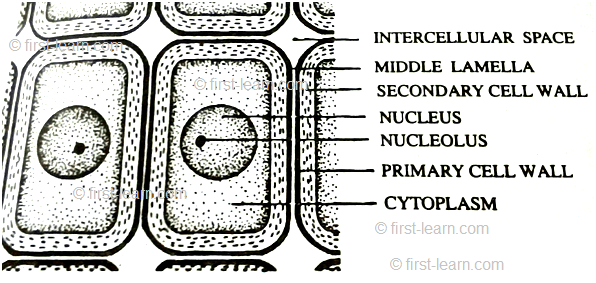Cell Theory
Introduction - Living beings or organisms are
made of one or more cells . Cells are the basic unit of structure and function
of organisms. It was discovered by Robert Hooke in 1665 as he observed under microscope,
a very thin slice of cork. That cork was made up of multiple chambers which he
termed them as cell. First he wrote a book on this called Micrographia and
coined the term cell.
Prior to the Robert Hooke in 1658 Jan Swammerdam observed red blood corpuscles of frog. Marcello Malpighi also observed in 1661 different types of small structure or utricular in slices of plant and animal tissues. In 1672 Antony von Leeuwenhoek was the first to observed free cell. He observed the bacteria, protozoa, red blood corpuscles,sperm cells etc. under his microscope. Nemiah Grew in 1682 initiated cell concept when he found that plant tissues contain minute elementary structures or cells. In 1809 Lamarck came to the conclusions that all living beings are formed of cells.
Cell theory- In 1838, Scleiden observed that all plants have similar cellular structure. Schwann in 1838 working independently observed that “animal cells do not have cell wall but are otherwise similar among themselves “. He put forward the cell hypothesis – bodies of animals and plants are made up of cells .In 1839, Scleiden and Schwan made comparison between their findings and formulated cell theory. Then it was modified by Schwann when found that cell products are constitute a major part of connective tissue.
Cell theory states that-
1. Living bings are made up of cells and their products. Depending upon the number of cell , living beings are unicellular, colonial, multicellular.
2. A cell is a mass of protoplasm having a nucleus.
3. Cells are similar in basic structure and metabolism.
4. The functions of an organism are due to activities and interactions of this cells.
There are several short comings –
a. Viruses do not have cellular structure.
b. Monerans and Protistans are not divisible into cells.
c. Certain organisms are multinucleated. Multinucleated organism is called coenocytic.
d. A typical nucleus is absent in prokaryote.
e. Connective tissues contain a lot of nonliving materials as compared to the living matter.
f. Certain cells loose their nuclei in the mature state.e.g. RBC ,sieve tube elements.
All cells arise from preexisting cell – Cell theory was further modified in the light of finding of Rudolf Virchow in 1855 and 1858. He explained that cell develops from pre existing cell. “Omnis cellula -e- cellula”. It is known as law of cell lineage. Later on a number of other modifications it was carried out in the cell theory. It is known as modern cell theory of cell principle or cell doctrine.
Exception of cell theory – After the discovery of viruses ,the cell theory was criticised and became apparent that there are some living organisms to which the cell theory was not applicable. Such living organisms are protobiota This category consists of viruses, viriod, prion etc.because they donot contain protoplasm . Virus outer covering is made up of protein coat called capsid and inner part contains either DNA or RNA.
Recent Articles
-
What Is Plasma? | Blood Plasma | Proteins | Nutrients | Cholesterol
Nov 07, 25 10:29 AM
Blood is a mobile fluid which is a connective tissue and is derived from the mesoderm like cell any other connective tissue. Colour of blood is reddish and that flows inside the blood vessels by means… -
Disorders of Respiratory System | Tuberculosis | Pleurisy | Emphysema
Oct 28, 25 11:39 PM
Tuberculosis is very common disease and is caused by a type of bacteria called Mycobacterium tuberculosis. This disease causes different trouble in the respiration and infection of several parts of th… -
Regulation of Respiration | Respiratory Centres | Inspiratory Area |
Oct 14, 25 12:13 AM
Respiratory Centre is the area that controls the rate of respiration and it is observed to be located in medulla oblongata and pons. Respiratory Centre has the following will dispersed components like… -
Explain Transport of Gases | External Respiration | Tissue Respiration
Oct 09, 25 11:35 PM
In humans gaseous exchange is completed in the following ways the steps are - External Respiration or Breathing - Breathing in false taking in of Oxygen and giving out of carbon dioxide in the body. M… -
Kind and Number of Teeth | Location of Teeth in Mouth | Care of Teeth
Sep 11, 25 12:52 AM
Kind and Number of Teeth















New! Comments
Have your say about what you just read! Leave me a comment in the box below.